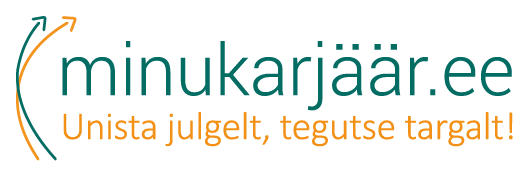The website you are viewing has been built and designed to comply with the WCAG 2.1 level AA and EN 301 549 standards. This means that certain technical tools and content design principles have been used to help people with visual, hearing, physical, speech, cognitive, language, learning and neurological disabilities use the site.
In addition, it is possible to improve the accessibility of information by configuring your computer at browser and operating system level. An overview of the main assistive technologies is provided below.
Keyboard navigation
It is also possible to navigate this website using only the keyboard. Navigation is performed using the 'Tab' key. Each press moves the focus to the next item. The currently active item is indicated by a box around it. To activate the link in focus, press the 'Enter' key on the keyboard. If you are using the keyboard to navigate, you may still need to use the arrow keys to select the answer options.
The first link on the page that becomes active when navigating with the keyboard is hidden from the normal user and is specifically designed for keyboard navigators. This is the 'Skip to content' link, which skips the header of the page and jumps to the main content.
Increase content
1. Web browsers
To enlarge content, we recommend that you first use the built-in functionality of your browser. All major browsers allow you to zoom in and out by holding down the 'Ctrl' key (or 'Cmd' on MacOS) and pressing the '+' key to zoom in or the '-' key to zoom out. Another handy option is to use the mouse. Hold down the 'Ctrl' key and move the mouse wheel. You can return to the original size by pressing 'Ctrl' and '0' at the same time.
2. Separate programs
All major operating systems have settings for enlarging the screen. In Windows there is a program called Magnifier which can be found in the search box on the left. You can search by pressing the 'Enter' key. When you open Magnifier, a small window appears showing everything enlarged. By default, the program keeps track of the position of the mouse pointer.
To use the magnification application on MacOS computers, navigate as follows Apple Menu > System Preferences > Accessibility (or Universal Access) > Zoom.
3. Browser extensions
For web browsers, there are plug-ins that add to the existing functionality of the browser. For example, for Firefox there is Zoom Page, which allows you to zoom in on the whole page or just the text; for Chrome there is Auto Zoom.
Using the screen reader
A screen reader is a program that tries to interpret what you see on a computer screen and convey it in other forms, such as sound or audio commentary. It is particularly useful for visually impaired people.
The content presented on this website is created in accordance with standards that are understandable for screen readers, ensuring that visual content can be reproduced in an alternative form. The website components are configured in a way that allows information to be consumed in the intended order when navigating with a screen reader. However, images do not include textual descriptions.
See a selection of popular screen readers:
- JAWS (Windows) www.freedomscientific.com/
- VoiceOver (macOS, free, built-in)
- NVDA (Windows, free) www.nvaccess.org/download/
- SystemAccess (Windows) www.serotek.com/systemaccess
There is no equivalent alternative or audio description for the videos on this page.
Due to the deficiency, the accessibility requirements 9.1.2.1, 9.1.2.3 and 9.1.2.5 of EN 301 549 are not met.
Non-textual content does not always have an equivalent textual alternative.
Due to a deficiency, accessibility requirement 9.1.1.1 of EN 301 549 is not met.
The information, structure and relationships conveyed by the representation of the content are not always identifiable in software or do not exist in text.
Due to this deficiency, accessibility requirement 9.1.3.1 of EN 301 549 is not met.
For user interface components with labels containing text or textual images, the name does not contain a visual representation of the text.
Due to this deficiency, accessibility requirement 9.2.5.3 of EN 301 549 is not met.
The name and role of all user interface components are not always software-definable.
Due to a deficiency, the accessibility requirement 9.4.1.2 of EN 301 549 is not met.
Some page components and important graphical objects do not have sufficient contrast against the background.
Due to this deficiency, accessibility requirement 9.1.4.11 of EN 301 549 is not met.
Text references on the page cannot be removed without moving away from the page.
Due to this deficiency, accessibility requirement 9.1.4.13 of EN 301 549 is not met.
Buttons that open a new web window do not convey this information through the screen reader.
Due to a deficiency, accessibility requirement 9.2.4.4 of EN 301 549 is not met.
Some elements do not have a focus style.
Due to a deficiency, accessibility requirement 9.2.4.7 of EN 301 549 is not met.
Some of the elements do not have a sufficiently large footprint.
Due to deficiency, criterion 2.5.8 of WCAG 2.2 is not met.
Increasing the page size by 150% may result in partial loss of content and functionality.
Due to this deficiency, accessibility requirement 9.1.4.12 of EN 301 549 is not met.
Insufficient Accessibility of Context Changes
Some context changes (such as opening new windows) occur without prior warning, which may disorient users.
Due to this deficiency, the accessibility requirement 9.3.2.1 of the EN 301 549 standard is not met.
Insufficient Navigation Accessibility
The website lacks mechanisms to skip repetitive content blocks (such as navigation menus), making navigation more difficult for screen reader users.
Due to this deficiency, the accessibility requirement 9.2.4.1 of the EN 301 549 standard is not met.





